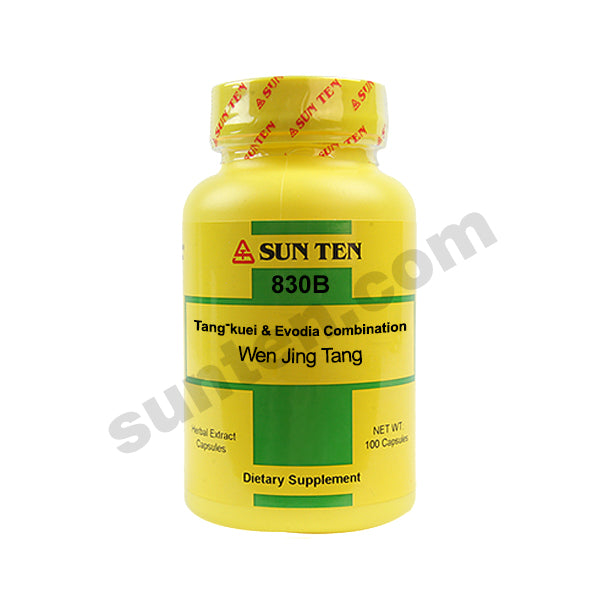Wen Jing Tang
Tang-kuei & Evodia Combination Capsules | 溫經湯
Practitioners: Please LOGIN to view the wholesale price. This item can only be purchased by a licensed practitioner. Find a practitioner
Ingredients: Ophiopogon root trber (mai men dong), Pinellia rhizome (zhi ban xia), Dong quai root (dang gui), Evodia unripe fruit (wu zhu yu), Chinese peony root without bark (bai shao), Sichuan lovage rhizome (chuan xiong), Cassia twig (gui zhi), Donkey-hide gelatin (e jiao), Treepeony root bark (mu dan pi), Asiann ginseng root (ren shen), Ginger fresh rhizome (sheng jiang), Chinese licorice root & rhizome (gan cao).
| Mandarin: 溫經湯 Pin-Yin: Wen Jing Tang English: Tang-kuei & Evodia Combination Romaji: Unkei To Kanji: 温経湯 Kampo: Yes |

